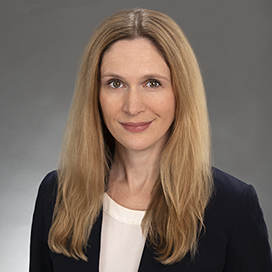No matter the administration, False Claims Act cases keep coming.
Just in this week’s issue of the print edition of Corporate Crime Reporter, we are reporting four major False Claims Act cases settling for more than $260 million total.

Partner
Goodwin Procter
False Claims Act cases are driven primarily by whistleblowers and their lawyers.
Even in 2020, the year of Covid and Trump, False Claims Act cases continued to keep corporate defense attorneys busy.
That includes Anne Railton, a partner at Goodwin Procter in New York.
“False Claims Act cases year after year continue to grow,” Railton told Corporate Crime Reporter in an interview last month. “Healthcare cases continue to be a major driver of False Claims cases. For the past ten years, there have been multi-billion dollar recoveries in the healthcare space. And that didn’t stop during the Trump administration.”
“The last year has been a difficult year. But we have seen repeated pronouncements from the government that this is a major area of focus. In a time of crisis, the False Claims Act is a tool that the government relies on to pursue misconduct.”
“We have not seen a slowdown in False Claims Act matters.”
While corporate self-disclosures drive many corporate crime cases, the driver behind most False Claims Act cases continues to be whistleblowers.
“In the False Claims Act practice, the cases are being driven by whistleblowers,” Railton said. “It’s 70 percent or 80 percent of all False Claims Act cases. And that’s not surprising. And it will continue.”
“The pandemic has caused a substantial job loss. It’s almost a perfect storm of factors for False Claims Act investigations and enforcement. You have large government stimulus funds being distributed. You have the attendant sharp government scrutiny. And you have a situation where a large number of people are out of a job. It creates a heightened risk of whistleblowers.”
“You will probably see an increased number of cases involving long term care facilities and nursing homes. Even before the pandemic, the Department of Justice said it had an enforcement focus on nursing homes and long term care facilities. Those would include cases where the government believes the facilities failed to deliver adequate care to their residents.”
You are on the defense side. But in doing these interviews with lawyers on both sides, there seems to be a sense that the practice is not that much different. If you are a government lawyer or defense lawyer, you are both doing similar work in ferreting out the information about what happened and what should be done.
“A large part of what we do on the defense side is as you described it. You dig in, investigate the facts, figure out what those facts mean, issue spot where there might be problems, and understand how a prosecutor would see the facts you are looking at.”
“One pretty significant difference is that a big part of what we are doing is assessing what it means for our client. There is an element that is really about the client. Sometimes that is an entity. Sometimes it’s an individual. I haven’t been on the government’s side. But the client is the factor that is different.”
Professor John Coffee at Columbia Law School has written a book titled Corporate Crime and Punishment: The Crisis of Underenforcement. He makes the argument that under President Trump, there has been a move away from monitorships and individual accountability in corporate crime cases, more reliance on deferred and non prosecution agreements.
“There is every reason to believe that under a Biden administration there will be a focus on policing corporate crime,” Railton says. “On the individual side, since the Yates Memo, you are seeing a focus on individuals. It’s likely that will continue under a Biden administration. There is also going to be some element of that that is circumstantial based on the pandemic.”
“Cases that were ongoing have not moved at the pace they might have moved. As circumstances related to Covid shift and as the new administration comes in, we will see more activity.”
You mentioned Sally Yates. We have written about the rise of women in white collar and the Women’s White Collar Defense Association. How have you seen that develop over your career?
“I am a member of the Women’s White Collar Defense Association. Watching the growth of that organization is representative of what is happening in the practice. It is no longer the likelihood that you will be the only woman in the room – both from the defense side and the government side. That’s all shifting in a meaningful way.”
“I had a trial two years ago where we had six lawyers in the room – three defense lawyers and three government lawyers. And all but one were women. It is still unusual, but it would have shocked me ten years ago when I was often the only woman in the room.”
“Organizations like the Women’s White Collar Defense Association prioritizing networking and connections among women are a big driver of that. There have always been women practicing in this field. But knowing other women in the space that you are in and having an opportunity to see them and hear what they are doing in an organized way is tremendous both in terms of morale and the continued growth of women in the profession.”
[For the complete q/a format Interview with Anne Railton, see 35 Corporate Crime Reporter 2(13), Monday January 11, 2021, print edition only.]